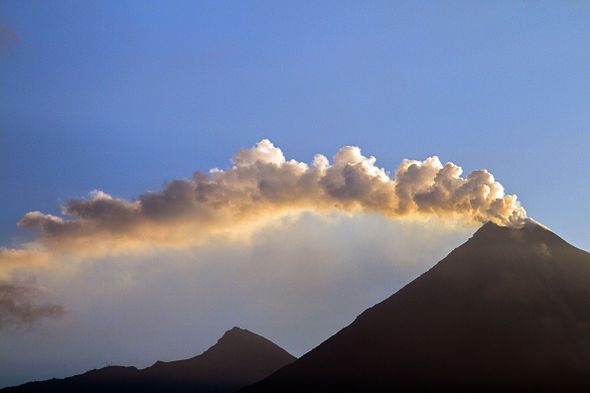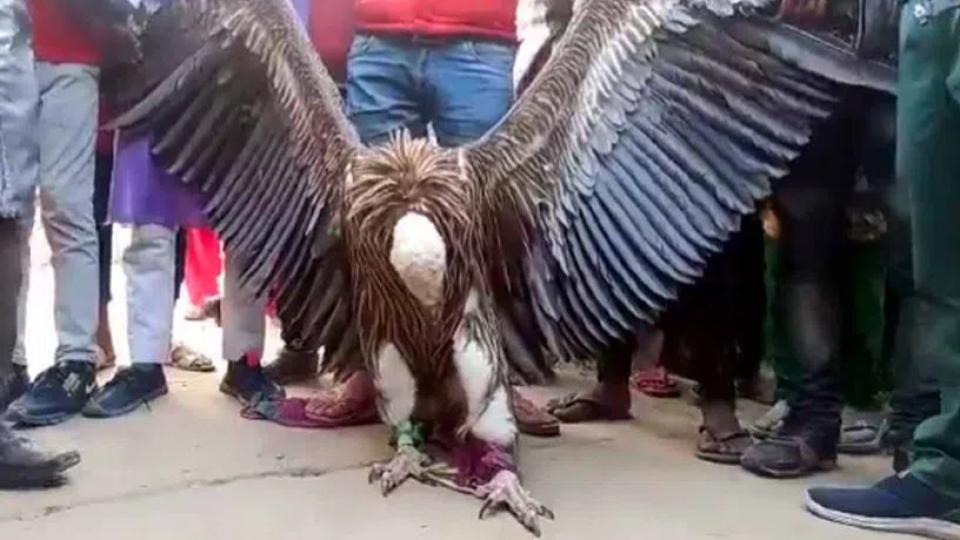VOLCANO ERUPTION ALERT - Colima could BLOW as mile high plume of smoke shoots into air
Tue 27 Dec 2016, 18:07:45

GEOLOGISTS are watching one of the world's most active volcanos as it threatens its first major eruption in over 100 years.
The 13,325 ft Colima volcano in Mexico known as the "fire" volcano is the country's most active but has not had a major eruption in 113 years.
But volcanologists have recorded an increase in activity since 2013.
Colima's last major explosion occurred on January 20, 1913 and caused havoc for four days as its ash flows and lava ran down its twin-peaks.
The volcano, which sits on the Trans-Mexican Volcanic Belt, remains dangerous as it is situated in a heavily populated region of Mexico.
Since 2015 it has recorded more violent explosions, resulting in the evacuation of some of the population close by.
In October more than 350 villagers living in La Yerbabuena and La Becerrera at the foot of the mountain were moved to safety.
While authorities in neighbouring Jalisco state also evacuated some residents.
According to research there has been 43 known eruptions over the last 400 years.
And flows from Colima have traveled 15 km from the centre of the volcano while ash was recorded as far as 450 miles away.
On Friday evening and Saturday morning, it had a pair of eruptions each spewing out large columns of gas and ash more than 2,500 meters (8,000 feet) high.
The first occurred at 6pm local time on
Friday, the second at 8am local time on Saturday.
The volcano is located in western Mexico between the states of Colima and Jalisco and is one of the country's most active.
Mexico contains over 3,000 volcanoes, but only 14 are considered active.
Other major eruptions in Mexican history have included the 1953 eruption of the Paricutin Volcano in Michoacan and the 1982 eruption of Tacana Volcano in Chiapas.
According to the US National Environmental Satellite, Data and Information service (NESDIS) there has been more than 100 Ash Advisories issued in the last 15 days.
Scientists have been watching the summit of the volcano using web cams to identify activity.
Previous data collected by experts Ricardo Saucedo, José Luis Macías, Juan Carlos Gavilanes and others, published in the Journal of Volcanology and Geothermal Research, estimated the height of the eruptive column containing ash and pulverised rock has shot up as far as 14 miles.
While no humans have ever been known to have been killed, previous eruptions have caused the death of cattle.
After the eruption of 1913, the volcano remained inactive a period of 44 years.
It is thought if an eruption like that of 1913 were to happen again it could lead to the evacuation of 320,000 people in a radius of 18 miles including the cities of Colima, Ciudad Guzman and Jalisco.
The 13,325 ft Colima volcano in Mexico known as the "fire" volcano is the country's most active but has not had a major eruption in 113 years.
But volcanologists have recorded an increase in activity since 2013.
Colima's last major explosion occurred on January 20, 1913 and caused havoc for four days as its ash flows and lava ran down its twin-peaks.
The volcano, which sits on the Trans-Mexican Volcanic Belt, remains dangerous as it is situated in a heavily populated region of Mexico.
Since 2015 it has recorded more violent explosions, resulting in the evacuation of some of the population close by.
In October more than 350 villagers living in La Yerbabuena and La Becerrera at the foot of the mountain were moved to safety.
While authorities in neighbouring Jalisco state also evacuated some residents.
According to research there has been 43 known eruptions over the last 400 years.
And flows from Colima have traveled 15 km from the centre of the volcano while ash was recorded as far as 450 miles away.
On Friday evening and Saturday morning, it had a pair of eruptions each spewing out large columns of gas and ash more than 2,500 meters (8,000 feet) high.
The first occurred at 6pm local time on
Friday, the second at 8am local time on Saturday.
The volcano is located in western Mexico between the states of Colima and Jalisco and is one of the country's most active.
Mexico contains over 3,000 volcanoes, but only 14 are considered active.
Other major eruptions in Mexican history have included the 1953 eruption of the Paricutin Volcano in Michoacan and the 1982 eruption of Tacana Volcano in Chiapas.
According to the US National Environmental Satellite, Data and Information service (NESDIS) there has been more than 100 Ash Advisories issued in the last 15 days.
Scientists have been watching the summit of the volcano using web cams to identify activity.
Previous data collected by experts Ricardo Saucedo, José Luis Macías, Juan Carlos Gavilanes and others, published in the Journal of Volcanology and Geothermal Research, estimated the height of the eruptive column containing ash and pulverised rock has shot up as far as 14 miles.
While no humans have ever been known to have been killed, previous eruptions have caused the death of cattle.
After the eruption of 1913, the volcano remained inactive a period of 44 years.
It is thought if an eruption like that of 1913 were to happen again it could lead to the evacuation of 320,000 people in a radius of 18 miles including the cities of Colima, Ciudad Guzman and Jalisco.
No Comments For This Post, Be first to write a Comment.
Most viewed from International
Most viewed from World
AIMIM News
Latest Urdu News
Most Viewed
May 26, 2020
Can Lionel Messi's visit boost Indian football?
Latest Videos View All
Like Us
Home
About Us
Advertise With Us
All Polls
Epaper Archives
Privacy Policy
Contact Us
Download Etemaad App
© 2026 Etemaad Daily News, All Rights Reserved.





































.jpg)
.jpg)
.jpg)


